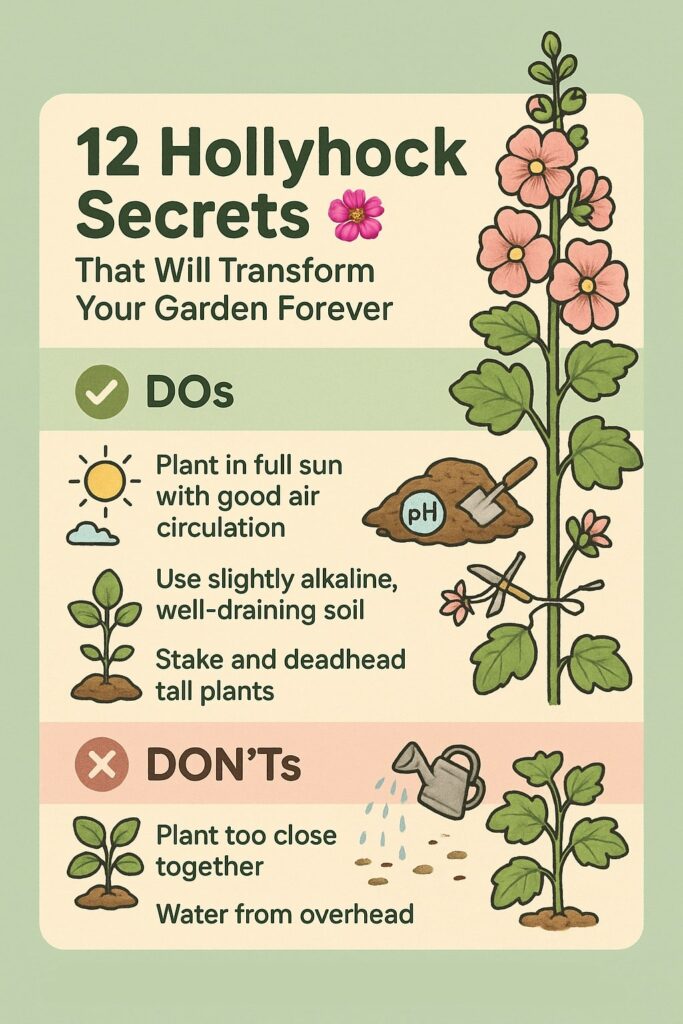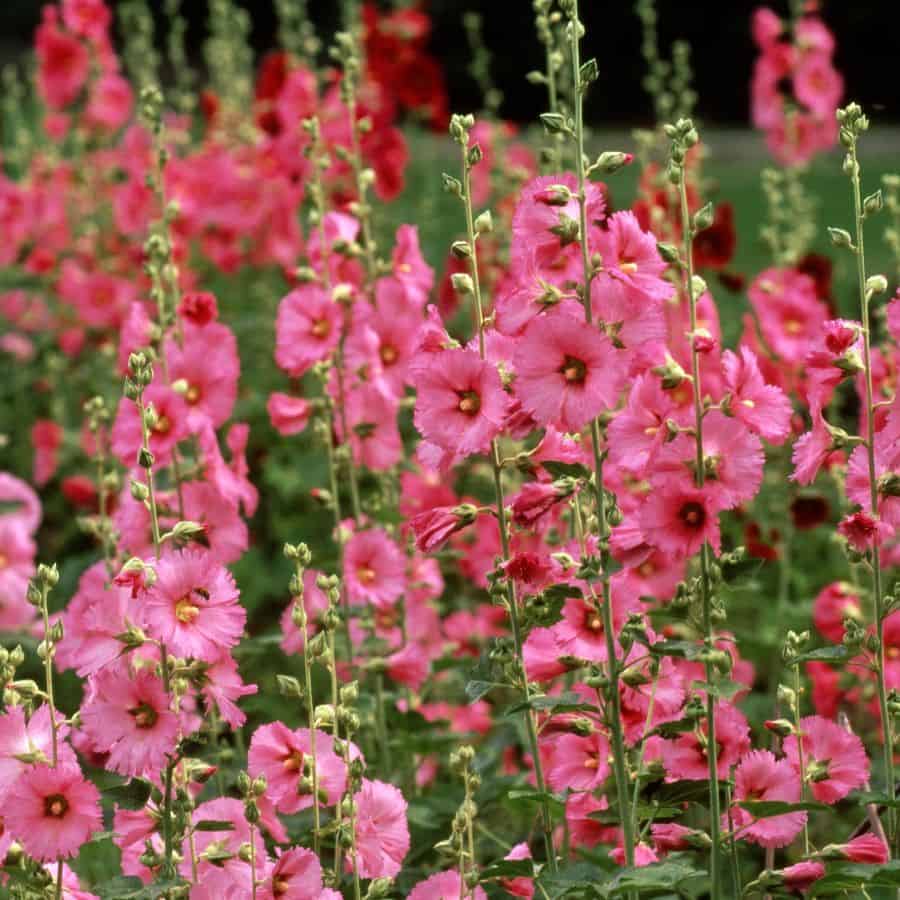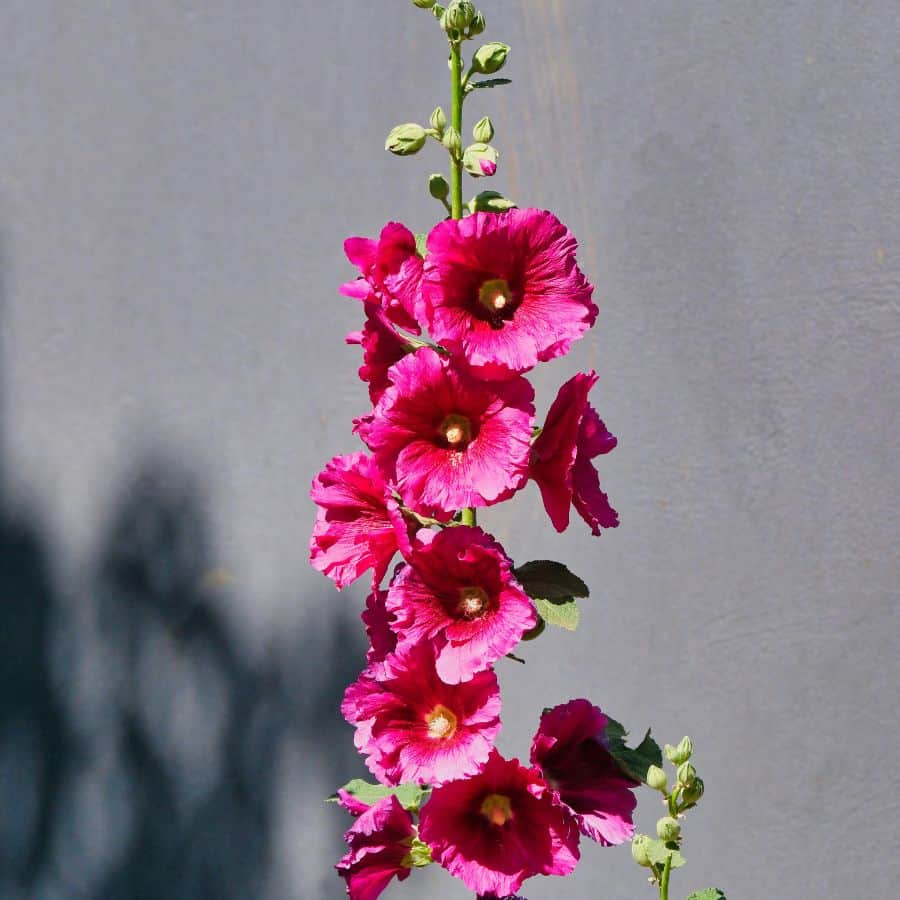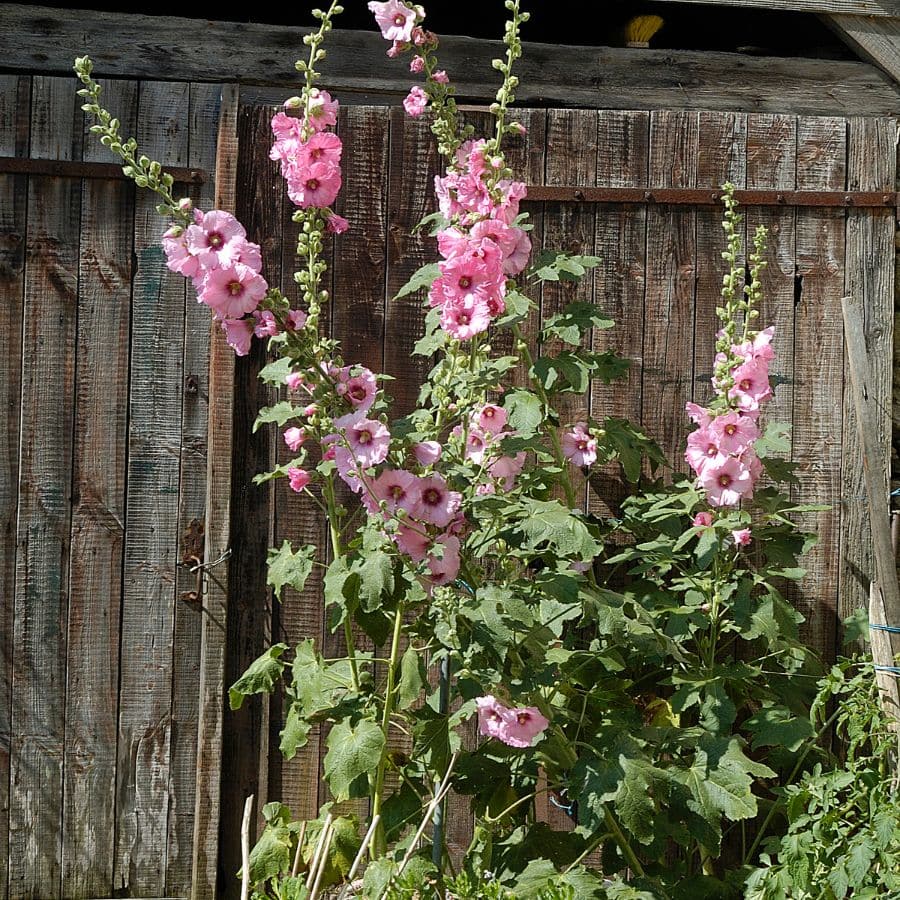
I was shocked to discover that many gardeners are inadvertently sabotaging their own hollyhocks without even realizing it!
These towering garden giants can reach up to 9 feet tall. That’s like having a small tree made entirely of flowers. Yet so many people struggle to get even basic blooms.
The secret most plant experts won’t tell you is this: hollyhocks are like theatrical divas. Give them exactly what they want, and they’ll put on a spectacular show that’ll have your neighbors stopping mid-walk to stare. Mess up even one key requirement, and they’ll sulk like teenagers.
Here are the 12 game-changing tips that separate amateur gardeners from hollyhock masters:
1. Master the Perfect Growing Zone Sweet Spot
Hollyhocks thrive in USDA zones 3-8, but here’s the kicker. They actually NEED cold winters to produce their most dramatic blooms. Think of winter as their beauty sleep. Without it, you’ll get lackluster flowers that look more sad than spectacular.

In warmer zones? You can still grow them, but you’ll need to baby them with extra mulch and consistent moisture. It’s like giving a polar bear a swimming pool in Florida; possible, but requires extra effort!
2. Unlock the Climate Code for Spectacular Blooms
Forget what you’ve heard about hollyhocks being “easy” plants. They’re picky about their climate preferences! These beauties require full sun (at least 6-8 hours per day) and good air circulation to prevent the fungal diseases that can devastate your blooms.
High-humidity areas are their kryptonite. If you live somewhere sticky and humid, space them extra wide and avoid overhead watering like the plague.
3. Choose Location Like a Real Estate Agent
Location, location, location! Your hollyhocks need to feel like garden celebrities – give them the prime real estate along fences, walls, or at the back of borders where their towering height becomes the star of the show.
Most people make this mistake: planting them in the middle of beds where they look awkward and out of place. Position them like backup singers supporting the lead vocalist: visible, but not overwhelming, shorter plants.
4. Create Soil That Makes Hollyhocks Sing
Here’s a revelation that changed my hollyhock game forever: they prefer slightly alkaline soil with a pH between 6.0 and 8.0. Most gardeners assume all flowers want acidic soil; wrong!
Mix in compost or well-rotted manure until your soil feels like chocolate cake batter. Rich, loamy, and well-draining. If water pools after rain, your hollyhocks will develop root rot faster than you can say “garden disaster.”
5. Perfect Your Seed Planting Timing Magic
The difference between amateur and professional plant parents is simply understanding this: planting in late summer to early fall is the secret to explosive spring growth. Plant in spring, and you’re fighting an uphill battle.

Space seeds 18-24 inches apart – closer spacing creates a disease breeding ground. Think of it as social distancing for plants!
6. Water Like You Mean It (But Don’t Drown Them)
Your hollyhocks are trying to tell you something important: they need deep, weekly watering sessions, not daily sprinkles. Imagine you’re filling up a deep reservoir, not just wetting the surface.
During heatwaves, increase watering frequency but never water the leaves directly. Wet foliage is like rolling out the red carpet for fungal diseases.
7. Feed Them Right for Maximum Drama
I was shocked to discover that over-fertilizing hollyhocks creates leafy monsters with disappointing blooms. Use balanced, slow-release fertilizer in early spring, and resist the urge to overfeed.
Think of fertilizer like coffee: a little gives energy, too much makes them jittery and unproductive.
8. Master the Art of Deadheading
Regular deadheading is like giving your hollyhocks a personal trainer. It keeps them producing vibrant new blooms instead of getting lazy. Cut spent flowers back to the nearest leaf set using clean, sharp scissors.
Skip this step, and your plants will think their job is done after the first flush of flowers.
9. Become a Disease Detective
Hollyhock rust is the silent killer that turns stunning plants into orange-spotted disasters. The game-changer for preventing rust isn’t what you think. It’s all about air circulation and bottom watering.
Spot those telltale orange spots? Remove infected leaves immediately and burn them (don’t compost). Use neem oil as your secret weapon against both rust and aphids.
10. Support Them Like the Giants They Are
These towering beauties can reach 9 feet tall. That’s like supporting a small tree in a windstorm! Stake them early with bamboo poles, tying loosely with soft garden twine.

Most people wait until the stems begin to bend. By then, it’s like trying to straighten a bent straw. The damage is already done.
11. Think Beyond This Season
Here’s the miracle most gardeners miss: hollyhocks will self-seed prolifically if you let some flowers go to seed. Allow a few blooms to develop brown, papery seed pods for next year’s free plants.
Collect seeds when pods rattle like maracashat’s nature’s way of saying they’re ready!
12. Plan for the Long Game
The secret to continuous hollyhock spectacular displays? Plant new seeds every year. These are biennials, meaning they bloom in their second year, then often die.
Smart gardeners stagger plantings to ensure blooms every single year. It’s like having a relay race of flowers passing the baton season after season.
With these 12 breakthrough tips, you’ll transform your struggling hollyhocks into towering garden celebrities that make your landscape the envy of the neighborhood.
The difference between disappointing blooms and jaw-dropping displays really is this simple. It’s all about understanding what these dramatic beauties truly need to flourish.